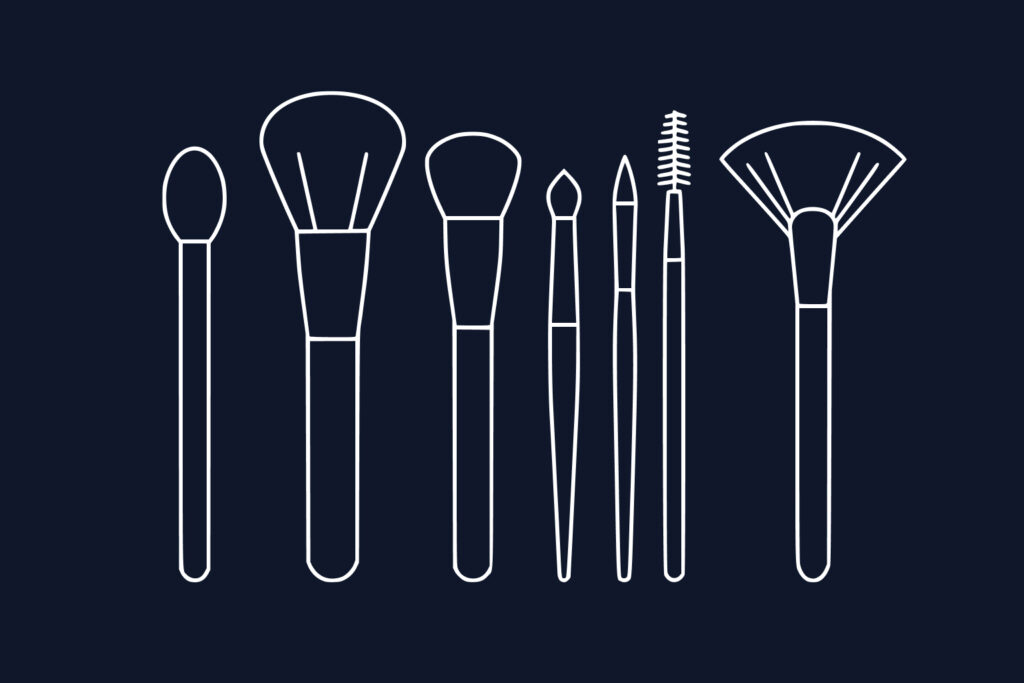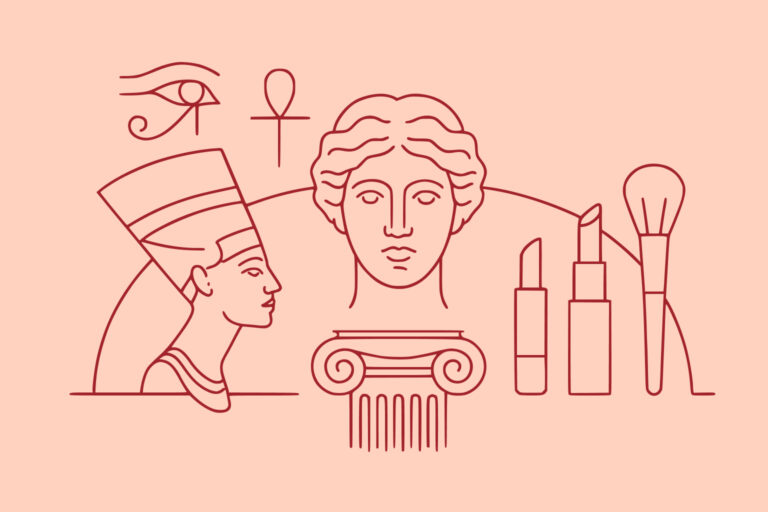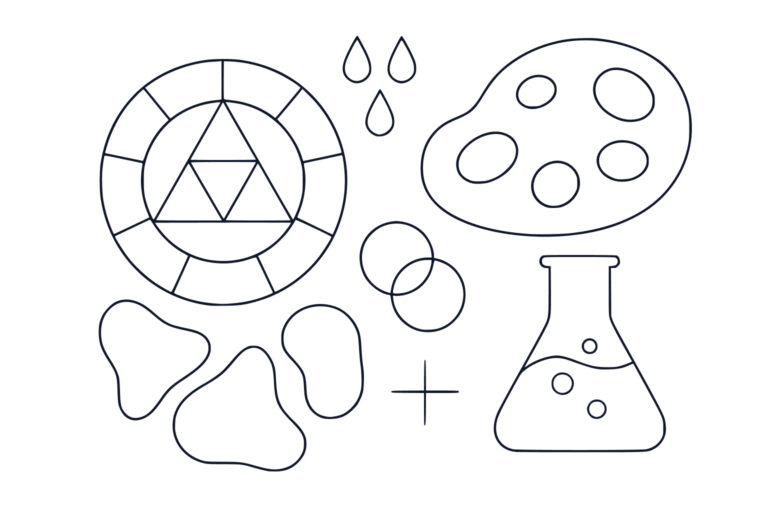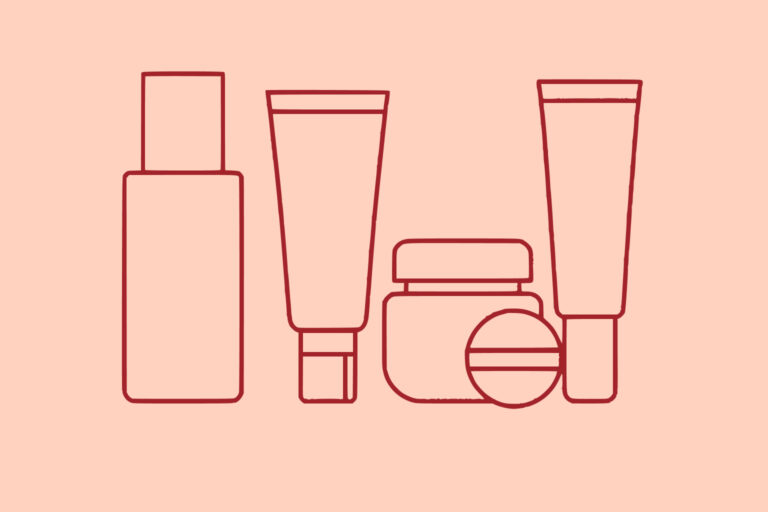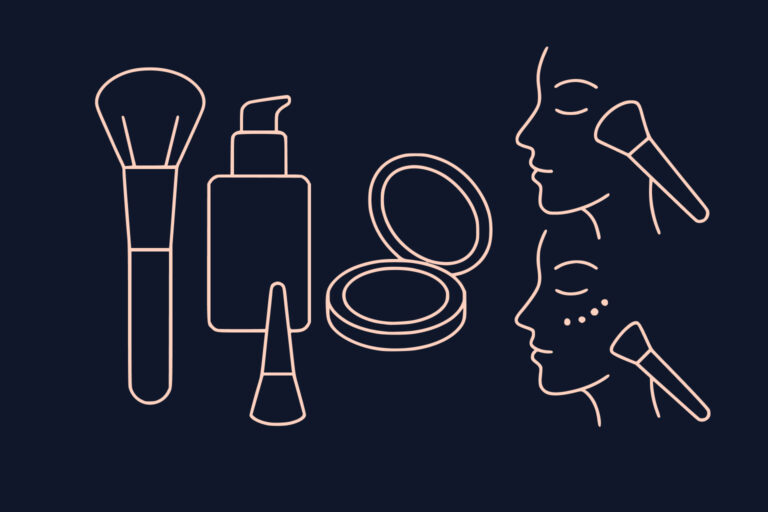Makeup Brushes 101: The Complete Guide to Tools and Their Uses
Published by Professional Makeup Artist London
The right makeup brush can transform your application from amateur to professional in an instant. Just as artists need quality paintbrushes to create masterpieces, makeup enthusiasts need the proper tools to achieve flawless results. This comprehensive guide will help you understand different brush types, their specific uses, and how to build a collection that serves your beauty needs.
Understanding Makeup Brush Basics
Every makeup brush consists of three essential components that determine its performance and suitability for different applications. The bristles, which can be made from natural animal hair such as goat, squirrel, or sable, or from synthetic fibres like taklon and nylon, determine how the brush picks up and deposits product. Natural bristles are slightly porous and excel at gripping powder particles, making them ideal for powder products like eyeshadow, blusher, and bronzer. Synthetic bristles, on the other hand, are smooth and non-absorbent, making them perfect for liquid and cream products like foundation and concealer.
The ferrule, which is the metal band that holds the bristles to the handle, plays a crucial role in the brush’s durability and performance. Quality ferrules are crimped securely and won’t loosen over time, typically made from aluminium or brass. The handle provides grip and control during application and can be made from wood, plastic, or metal, with length varying based on the brush’s purpose and user preference.
Understanding the difference between natural and synthetic bristles is crucial for optimal makeup application, much like understanding the historical evolution of makeup tools helps us appreciate modern innovations. Natural bristles offer superior powder pickup and blending capabilities due to their slightly porous texture, whilst synthetic bristles are non-absorbent, hygienic, cruelty-free, and more resistant to damage from washing and use.
Essential Brushes for Beginners
If you’re just beginning your makeup journey, five essential brushes will cover all your basic needs and provide a solid foundation for your collection. A foundation brush with its flat, dense, slightly tapered shape allows for even application of liquid or cream foundation using stippling or buffing motions for seamless coverage. Whilst a beauty sponge can serve as an alternative for those preferring sponge application, a dedicated foundation brush offers more control and precision.
A powder brush, characterised by its large, fluffy, dome shape, is essential for setting foundation with loose or pressed powder. The technique involves light, sweeping motions to avoid disturbing the foundation underneath, and it’s important to tap off excess powder before application to prevent a cakey appearance.
The blusher brush, with its medium-sized, slightly angled or rounded shape, adds colour to cheeks with powder or cream blusher. The proper technique involves smiling and applying to the apples of cheeks, then blending upward. This versatile brush can also be used for bronzer and light contouring, making it an excellent multi-purpose tool.
An eyeshadow brush with a medium-sized, slightly tapered, fluffy shape serves as the most versatile eye brush for beginners. It’s used for applying and blending eyeshadow colours by patting colour onto the lid, then blending in windscreen wiper motions. This single brush can handle most basic eyeshadow applications.
Finally, an eyeliner brush with its small, flat, angled or pointed shape allows for precise application of gel, cream, or powder eyeliner using short, controlled strokes for clean lines. As a bonus, this brush is also perfect for detailed eyebrow work.
Face Brushes: Creating the Perfect Canvas
Foundation application methods significantly impact the final result, and different brush types serve different purposes. A flat foundation brush works best for full coverage liquid foundation, applied in sections and blended outward from the centre of the face. This method provides precise application and buildable coverage, allowing you to control exactly where and how much product is applied.
A stippling brush, also known as a duo-fibre brush, features two-toned bristles with white tips and a black base. This unique construction makes it ideal for achieving a light, airbrushed foundation finish using gentle stippling motions for natural coverage. The technique creates a seamless, natural look that’s perfect for everyday wear.
Buffer brushes, with their dense, flat-topped, tightly packed bristles, work best with mineral foundation and powder foundation. The circular buffing motions create a seamless finish that looks natural and polished. This technique is particularly effective for those who prefer powder foundation or need to build coverage gradually.
Understanding proper colour theory and placement enhances the effectiveness of specialised brushes used for contouring and highlighting. A contour brush, with its angled, medium-density, tapered shape, sculpts and defines facial features by applying product to the hollows of cheeks, temples, and jawline. This brush works effectively with powder, cream, or liquid contour products.
Highlight brushes, ranging from small to medium size with fluffy, tapered bristles, add luminosity to the high points of the face. The technique involves light, sweeping motions on cheekbones, nose bridge, and cupid’s bow. The key is using a light hand to avoid over-highlighting, which can look unnatural.
Fan brushes, with their flat, spread-out bristles in a fan formation, serve multiple purposes including subtle highlighting and powder removal. The gentle sweeping motions create a natural glow, and they’re excellent for removing excess powder or eyeshadow fallout without disturbing the rest of your makeup.
Building Your Brush Collection
Building a comprehensive brush collection should be approached strategically, considering both budget and skill development. For beginners working with a budget of thirty to fifty pounds, the essential basics include a foundation brush or beauty sponge, powder brush, blusher brush, basic eyeshadow brush, and eyeliner brush. This foundation set covers all basic makeup needs and allows you to practise fundamental techniques.
As your skills expand, the next phase involves investing fifty to seventy-five pounds in additional brushes including a blending brush, contour brush, highlight brush, crease brush, and lip brush. These additions allow for more sophisticated techniques and better results.
The professional level, requiring an investment of seventy-five to one hundred fifty pounds, includes multiple eyeshadow brushes in various sizes, specialised brushes like fan and stippling brushes, high-quality natural hair brushes, and backup brushes for efficiency. This level of collection allows for professional-quality results and efficient application.
When deciding where to invest versus where to save, consider investing in blending brushes since they’re crucial for seamless eyeshadow, foundation brushes because they affect overall finish quality, and brushes you’ll use daily. You can save money on speciality brushes used occasionally, brushes for experimenting with new techniques, and backup brushes for travel.
Understanding which makeup products work best with specific brush types helps maximise your investment and ensures you’re getting the best performance from both your brushes and your cosmetics.
Brush Care and Maintenance
Proper brush care extends the life of your investment and ensures optimal performance. Daily maintenance involves using brush cleaning sprays for quick sanitisation between uses, swirling brushes on clean tissue to remove excess product, and allowing brushes to air dry completely between uses. Spot cleaning is essential when switching between colours and can be accomplished using gentle brush cleaners or makeup wipes, always reshaping bristles whilst damp.
Weekly deep cleaning is crucial for brush longevity and hygiene. The process begins with rinsing bristles in lukewarm water with bristles pointing downward to prevent water from entering the ferrule. Gently massage a small amount of gentle shampoo or specialised brush cleanser through the bristles, then rinse thoroughly to remove all soap residue. After cleaning, gently reshape the bristles whilst damp and lay the brushes flat on a towel with bristles hanging over the edge to dry.
Several practices will extend brush life significantly. Never soak the ferrule, as this can loosen the glue holding the bristles. Avoid hot water, which can damage bristles and loosen the ferrule connection. Replace brushes when they shed excessively or lose their shape, and store brushes upright or in protective cases to maintain their form.
Conclusion
Mastering makeup brush selection and use is fundamental to achieving professional-quality results. Whether you’re a beginner building your first collection or an experienced enthusiast expanding your toolkit, understanding each brush’s purpose and proper care ensures optimal performance and longevity.
Remember that the most expensive brush isn’t always the best choice. Focus on quality construction, appropriate bristle type for your needs, and proper maintenance. With the right tools and techniques, you’ll be able to create any look from natural everyday beauty to dramatic special occasion glamour.
The journey from makeup’s ancient origins to today’s sophisticated tools shows how far we’ve come in perfecting the art of beauty application. Your brush collection is an investment in your artistry. Choose wisely, care for them properly, and they’ll serve you well for years to come.
